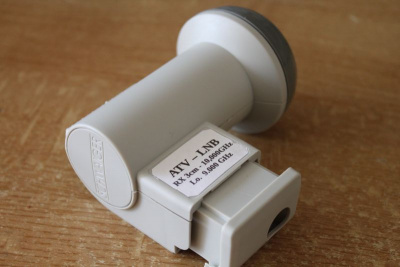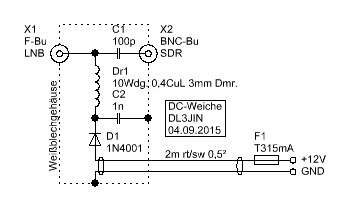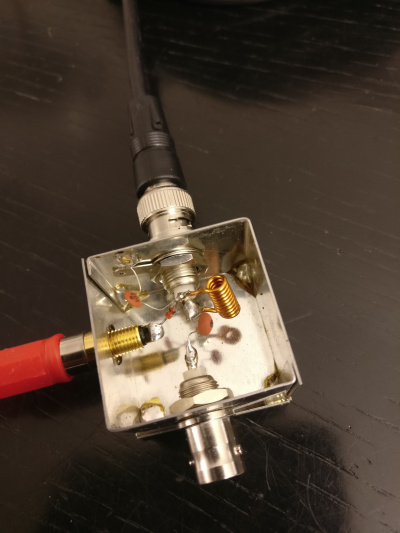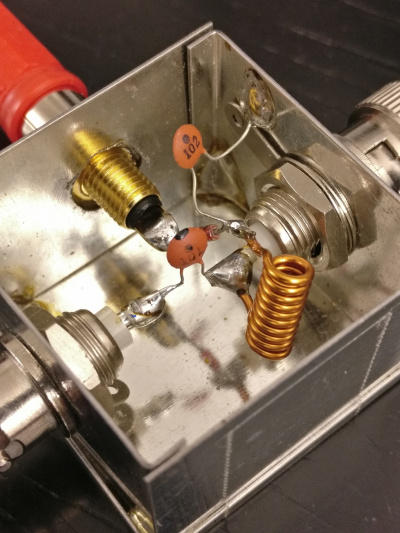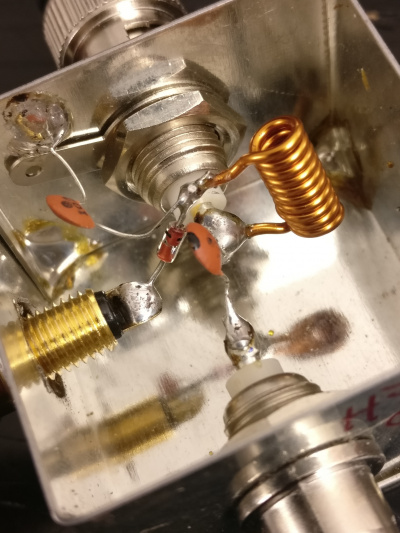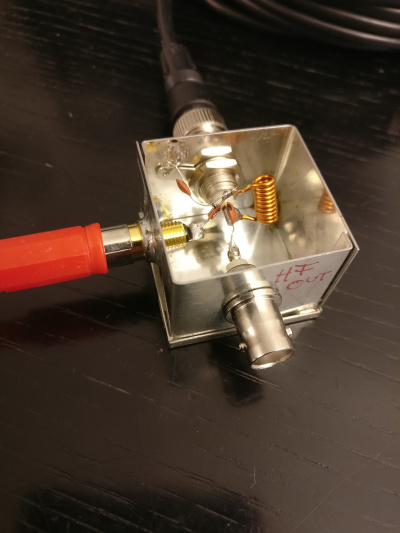Receiving Es'HailSat
Inhaltsverzeichnis
1 Scope
The new Es'HailSat from Quatar has received wide attention. Let's start to play with it. The first step is to receive it's signal.
By coincidence I purchased an LNB with a LO frequency of 9 GHz some years ago, while never using it. Now the occasion has come to really use it. Yet, some more components are missing:
- A DC injector
- A receiver component
- A satellite dish
2 Links
3 Hardware
3.1 LNB
There are vendors on Ebay who sell modified LNBs for a small price:
https://www.ebay.de/itm/ATV-LNB-3cm-Amateurfunk-10GHz-analog-digital-DX-mit-Schutzschacht/233077898628
I have one from Dieter DL2KBH:
I am using another one also:
https://www.ebay.de/p/Octagon-Multifeedhalterung-2-fach-2x-Single-LNB-Optima-Slim-OSLSO-PLL-Diesqc/1806829528?iid=311638384271&chn=ps
Product Name: Octagon Single LNB Slim OPTIMA Input Frequencies: 10.70 - 12.75 GHz LO: 9.75 / 10.6 GHz Noise figure: 0.1 dB Amplification: 60-65 dB High polarization separation High frequency stability Feed diameter 40mm
3.2 Injector
This component needs to be home built.
And here it is:
A measurement with my Spectrum Analyzer (with tracking generator) showed that the insertion loss is around 5dB. That's quite a lot, but my expectation is that the LNB will give me a considerable boost so that this loss is not relevant. We will see.
I changed the 1N4001 diode into a 1N4007 type.
And I left the fuse out. Fusing shall be done differently, as just for this test.
3.3 Receiver
I envisage to use two different receivers:
- USRP2
- NooElec RTLSDR Stick
4 Images
TBD
